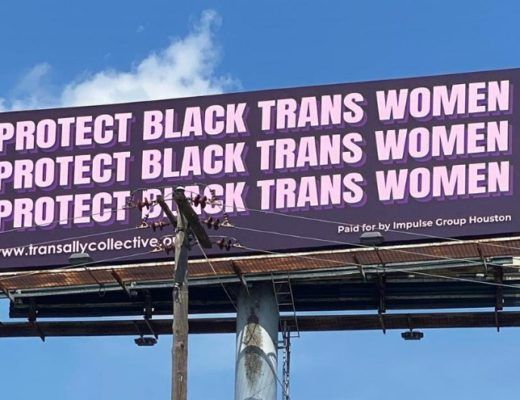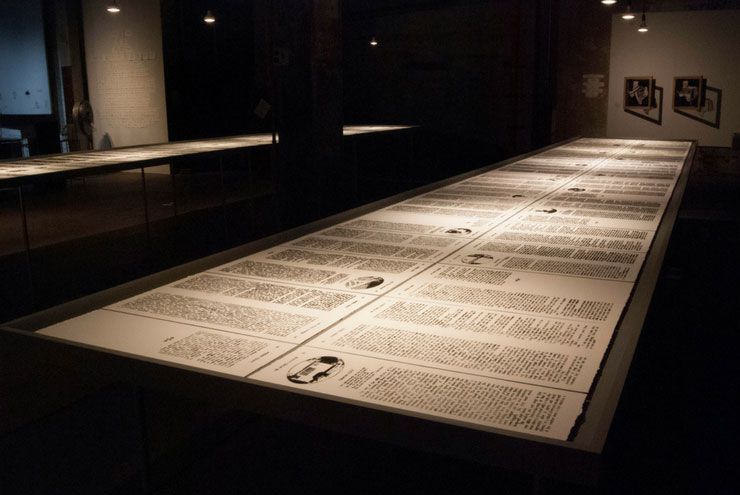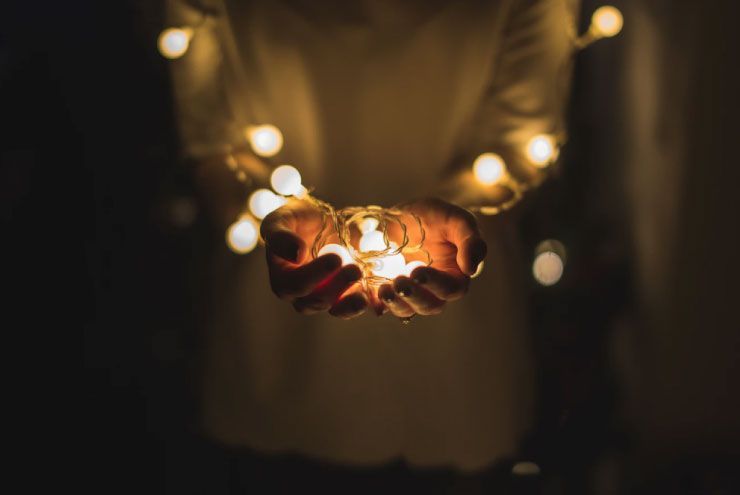By Aubrey F. Burghardt
Queer artists are often expected to produce just that: queer art. As art lovers, we anticipate these artists’ visual masterpieces to reverberate with the queer lived experiences of their creators. Subsequently, we forget that, while queer art is an extension of the artist, it is not limited to a single facet of the maker’s identity.
The following five southern queer artists defy all definitions of art. I have personally watched each of these artists cast off the expectations placed upon their art in order to create their own labels, carve their own creative paths, and brilliantly emerge as prominent forces within the visual culture scene.
S. Rodriguez
Houston-based trans xicanx artist S. Rodriguez has made a name for themselves as one of the founders of the 2017 Idea Fund grant-winning queer culture bookstore Paraspace Books, which they created in partnership with arts organizer Sara Balabanlilar. On an individual level, however, Rodriguez—who is well-educated in queer rights and queer relationships—is becoming widely recognized for their artistic work surrounding bodies.
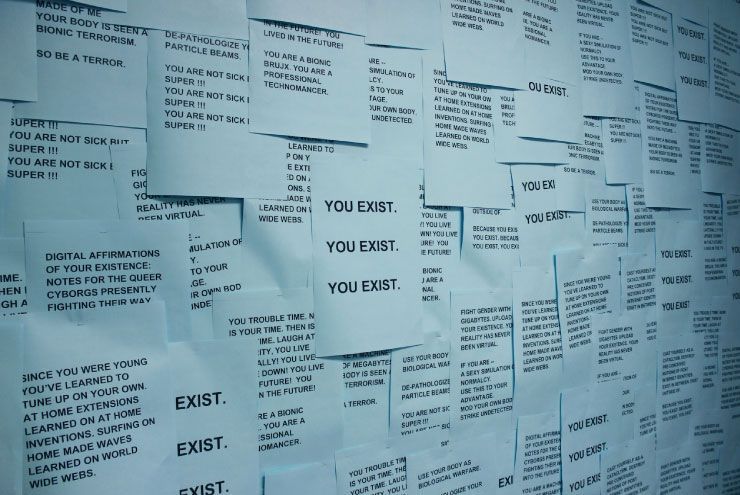
S. Rodriguez, Untitled, broadsides composed of the artists’ original text, DIGITAL AFFIRMATIONS OF YOUR EXISTENCE, dimensions variable, 2016. Photo by Sarah Welch Photography.
Rodriguez’s work reconnoiters bodies of all dimensions—the physical body, digital bodies, and bodies of text. Through flurries of interactive installments that incorporate paint and the human body’s electrical current, the artist suggests an introspective look at the relationship between our bodies and their efficiency. Currently, Rodriguez works to elicit this inward reflection through their pieces focused on sound emission from touch.
Catch a showcase of Rodriguez’s work during their upcoming solo show at Box 13 in May 2019. In the meantime, you can see their tinkering on Instagram (@blve.azvl).
Jeremy and Harley
Hailing from Palestine, Texas, Jeremy and Harley are a seamless duo who share one vision—to create quality costuming. Jeremy, who has long been involved in the cosplay scene, was taught the fundamentals of basic sewing by his grandmother, while Harley is a self-taught theatrical makeup artist. Together, the pair creates immaculate cosplay designs that are widely recognized and sought after for their accuracy and attention to detail—from the architecture of the garment to the finished presentation, complete with makeup and staging.
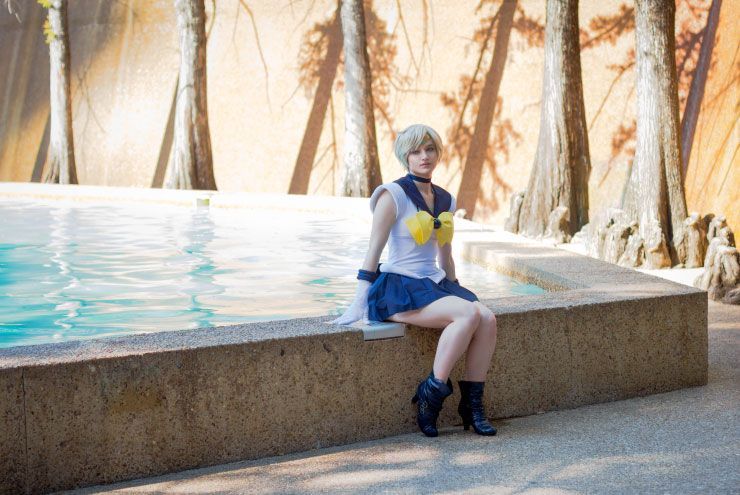
Jeremy and Harley, Sailor Uranus costume. Photo by Atelier Heidi.
Thanks to drag, cosplay has grown in popularity and become a respected art form. Queer fashion, the duo explains, is often equated to costuming since both regularly fall outside of the heteronormative notions of dress. Jeremy and Harley aim to change this narrative and make costuming acceptable and desired within mainstream fashion.
The pair is also currently working on a project in which they photograph queer individuals in “professional wear,” and listen to each person’s experience with identity expression in the workplace. Jeremy and Harley hope this project helps to reshape the general consensus of what is deemed “professional.”
Claire Richards
Extraordinary doesn’t begin to describe the matriarch of Hardy and Nance Studios, Claire Richards. The mixed media and large–scale abstract artist is known for her fearless commentary and curation of the studios’ blow out exhibitions. Upon my arrival to Hardy and Nance, her hues of black swathe, Doc Marten work boots, and tattooed forehead oddly put me at ease. She smoked a cigarette and asked, “What do you want to know?”
I wanted to know everything. I learned that Australia is her motherland and that she left home at the early age of 15. From there, she explored the punk rock scenes of Houston and Austin, then had a stint in Alaska before settling back down in the Bayou City. She began painting seriously at the old Commerce Street studios, though she had no tangible focus besides irony and contrarian imagery. But Richards quickly grew to be a strong force in the Houston arts community and became known for her endurance, which was evidenced by the two solo shows she curated during and post-Harvey.
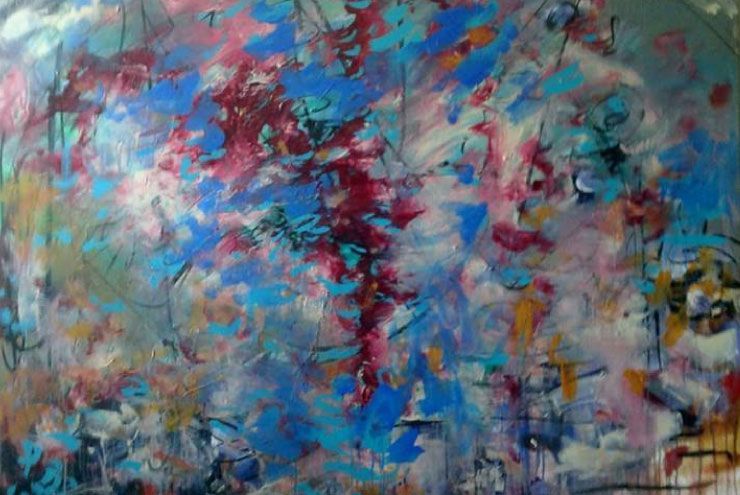
Claire Richards is a long standing resident artist at Hardy and Nance Studios.
Her own works are instinctual baths of raw color and texture. Richards paints (brushwork, hand, and finger painting) primarily with acrylics, but her work shines with the richness of oil (even though she says that she is too impatient for oil). The abstraction, she mandates, must expose and equate to the artist’s emotional response. She notes she doesn’t actually like the term “abstract,” however, as it suggests something the viewer cannot understand. But while you will witness nuances, ambiguity, and fog within her work, chances are, there’s something you’ll recognize buried deep within each piece.
You can peruse Richards’ spellbinding works on her Instagram (@ClaireRichardsArt).
Charli Sol
Charli Sol, much like their last name, is a bright star with a magnetic center. The Houston-based oil painter and non-binary activist is one of seven artists selected for the Project Row Houses 2018 Summer Studios residency, a program which provides emerging artists with the opportunity to create and exhibit work that responds to, engages with, and is reflective of community. All of Sol’s portraits are of new friends and community members of Houston’s historic Third Ward neighborhood (where Project Row Houses is located). These portraits, Sol notes, are influenced by their educational background in critical race studies and their goal with each is to visually communicate social constructs. As an artist, Sol also strives to hold space for the queer experience and to connect queer bodies similar to their own—a concept manifested in much of their work.
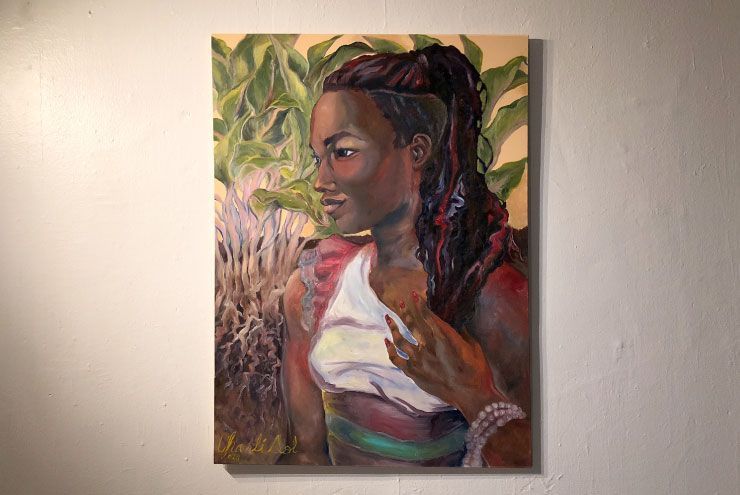
Charli Sol, Sasha.
Follow Sol’s work on Instagram (@crygender). Sol’s Future Visions and six additional Summer Studios exhibitions are on display to the public until September 16, 2018 at Project Row Houses.
Douglas Welsh
Fresh off his one-year block program at the Museum of Fine Arts Houston’s Glassell School of Art, abstract painter Douglas Welsh is reimagining the art of portraits. Although his current series might feature some of the people who motivate him most, don’t anticipate seeing anything that resembles physical features. For each portrait, Welsh breaks down and isolates his subject’s energy and spirit, transferring it onto the canvas with multiple passes of paint. He notes that the abstract color selections that dominate his work are influenced by his love of poetry and fiction. And, while most people attempt to attach physical references to his work, Welsh defies these expectations by approaching the human form with romanticism instead of science.
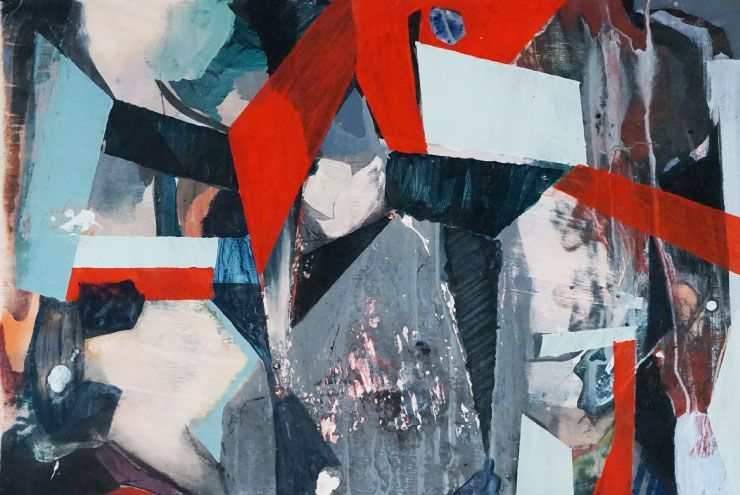
Douglas Welsh, Fog on a Rectangle, 2017.
Welsh’s next show will be Block XVIII, on display September 28-November 4, 2018 at the MFAH Glassell School of Art’s Levant Foundation Gallery (5101 Montrose Blvd). You can view more of his work at douglaswelsh.com and on Instagram (@dpw_art).



